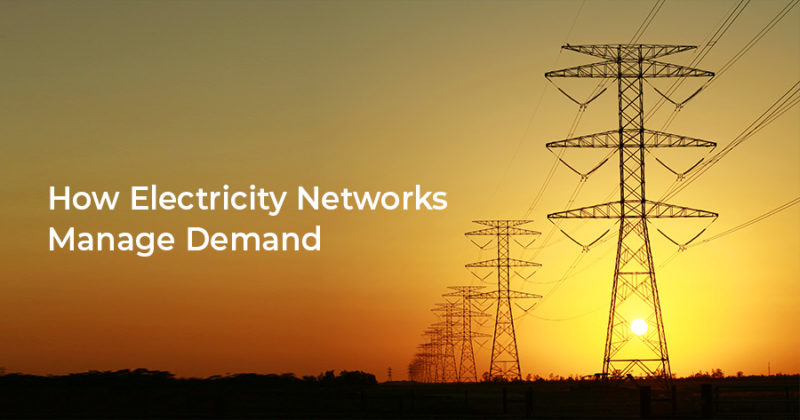How Do Electricity Networks Manage Demand?

The electricity grid is an intricate and vital entity which we all rely on to supply our everyday electricity needs.
The grid must meet two important criteria; electricity supply must always meet demand, and the grid must be capable of meeting maximum demand when needed. For this to occur, networks must build infrastructure that is large enough to accommodate for the level of demand or have measures in place to ensure the grid remains balanced when demand is high. Building more infrastructure is expensive, with the cost often passed onto the community through increases in power prices, despite much of the infrastructure not being used during the remainder of the year. Therefore, its essential that consumers balance the equation and reduce their consumption of energy during peak demand.
For businesses, managing consumption efficiently during times of peak demand is vital, as electricity rates are extremely costly. Thankfully, there are several opportunities for businesses to manage their energy consumption.
What is Demand Side Management?
Demand Side Management (DSM) refers to the initiatives that encourage consumers to modify their electricity usage to balance demand.
Improving the way your business uses energy through demand side management can help to reduce your businesses operating costs. Each practice has its own financial and operational benefits and will be dependent upon the nature of your business.
Both large and SME businesses can participate and benefit from DSM programs. Examples of DSM include:
Reduce overall electricity consumption
Actions that the business can do to reduce demand and overall consumption, such as putting energy efficiency measures in place. This can include replacing old lightbulbs with LED efficient bulbs, reducing standby power, upgrading to more energy efficiency machinery, and engaging in efficient behaviours such as adjusting the thermostat of the air conditioner and switching off unused lights.
Load shifting
Load shifting refers to shifting consumption of electricity during a peak demand period, to a period which is off-peak. Off-peak periods are much cheaper, providing a substantial financial incentive for businesses who are wanting to reduce their electricity bills.
Embedded generation
Encouraging electricity consumers to self-generate their energy through renewable sources such as solar PV systems can relieve demand pressures and provides several benefits alone. Often referred to as ‘behind the metre’, self-generated energy can be used by the business to significantly reduce the amount of electricity you purchase from the grid, and in most cases, allows excess energy to be exported back to the grid. Self-consuming this solar energy is the most feasible option, as the feed-in tariff in most states is low.
The use of batteries on-site can also relieve local demand pressures as well as business costs, as the stored energy can be used in peak-demand periods when electricity is more expensive.
Pricing Initiatives
Pricing incentives are offered to consumers to reduce their electricity during periods of peak demand. Often in the form of time-of-use tariffs, or demand-based tariffs, lower rates are offered when energy is consumed in off-peak periods to encourage consumers to use less electricity. In Western Australia, demand is often highest during 4-8pm.
Some businesses can also be rewarded for not using electricity when the grid is running in high-demand. If a business can successfully reduce their electricity consumption for a period, the DMS provider will often provide a credit to the customers bill. Usually consumers will receive a notification leading up to the time that the retailer is requesting the customer to switch off so they can adequately prepare.
Modifying your electricity use can provide immense savings for your business. With electricity prices continuing to rise, its important businesses invest in solutions that will financially secure them against any risk this may pose on them.
If you’d like to learn more about how your business can save on electricity bills, contact us today.


